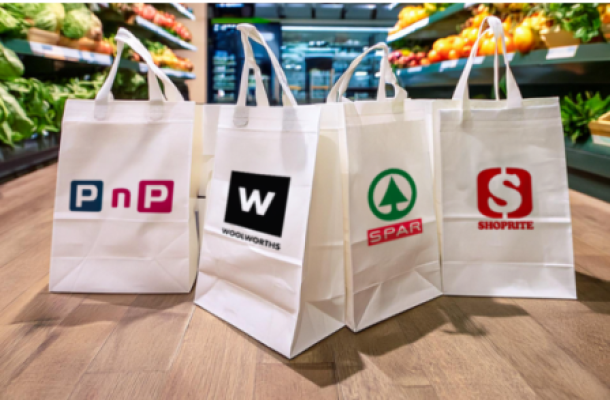Capitalising on consumer interest in health could accelerate Out-of-Home Eating – IGD
One-third (31%) of consumers would eat out more if healthier options were more readily available, according to new research into the out-of-home market unveiled this week by IGD.
Interest in healthy eating is on the rise and so is eating out. IGD’s research – the first of its kind into this sector – explores the links between these trends and the opportunities presented for food and drink companies.
With over two-thirds (67%) of consumers eating out at least once a week, according to IGD, and 34% claiming to do so a couple of times a week, the research examines the relevance of health on these occasions and how consumers balance nutritional aims with the desire for a treat. The research comprised an online survey of more than 9,000 people, plus qualitative tracking of consumers’ out-of-home eating experiences.
Joanne Denney-Finch, Chief Executive of IGD, said: “Our new research, the first of its kind into the out-of-home sector, focuses on two powerful trends at play in today’s market: eating out, and eating well. Eating out of home plays a significant part in the national diet and at the same time, interest in health and eating healthily is growing. Many food and drink companies already view health as a hugely important part of their strategy, but there is a clear commercial opportunity for businesses to take the lead in this area. Our findings signpost how companies can make the most of these two mega trends as they continue to come together.”
Rhian Thomas, Head of Shopper Insight at IGD, added: “Health is rarely the number-one factor when people eat out and yet it widely influences behaviour and was regularly mentioned by the consumers we spoke to. Even when people are not actively seeking healthy choices, they avoid some outlets and menus viewed as too unhealthy – one-third (34%) avoid eating in certain places for this reason. Also, people may limit their eating out occasions if they associate this with over-indulgence.”
Four key areas of influence
Rhian outlines four main factors that influence people’s decisions when eating out of home. She said: “The first is occasion, i.e. day of week and time of day. Regular occurrences such as workday lunches are more functional and controlled whereas weekend dinners are usually seen as special occasions and the time for a treat.
“The second is companionship i.e. who people eat with, if anyone. On their own, people tend to stick to regular choices, whereas in a group, they are more likely to try new things or visit different places. The third area is mood, i.e. the difference between a functional need and an emotional one.
“Finally, we see the influence of speed and convenience. Some out-of-home eating decisions are made in time-pressed circumstances where people need easy choices, whereas others are relaxed occasions.”
Barriers and solutions
IGD’s research highlights four barriers preventing health from having more of an influence on people when they eat out, according to Rhian.
Value perceptions
“Over half (59%) of consumers feel it’s more expensive to eat healthily when out of home. The industry therefore has lots of scope to show consumers how they can eat healthily on a budget.”
Confusion about messaging
“If health information is not presented in a consistent way, it can sometimes confuse and lead to wrong choices,” said Rhian. “The food industry therefore has an opportunity to continue the work it has already started on refining its messaging to consumers.”
The effort to pursue health
“Our research shows that when grabbing food on the go, people usually revert to the easiest option, so if finding something healthy requires special effort they are less likely to do so. When offered a range of options to make finding healthy food easier, the largest proportion of consumers recommended a dedicated selection of healthy options clearly marked in-store or on the menu (35%). The answer for different retailers could vary by format, customer base and even time of day, to make it as simple as possible to signpost consumers to seek out healthier options.”
Takeaway food culture
“Takeaway missions have the lowest explicit levels of consideration around health. However, expanded home delivery and takeaway options could shift this perception over time,” she adds.
Four business opportunities
Finally, the research presents four clear commercial opportunities for companies, according to Rhian:
Offer a broader range of healthy options
“First, there is scope to encourage some people to eat out more frequently by offering a broader range of healthy options and meeting specific dietary claims, with 30% of consumers looking for more vegetarian options, 22% for more dairy-free choices and 20% for a larger vegan range (IGD ShopperVista Food-to-go, Q2 2017),” she said.
Reposition the language of health
“There’s also an opportunity to reposition the language of health. Many consumers view healthy eating as a sacrifice but there is scope to break this association, by showing that healthy food can taste good and make you feel good too,” continues Rhian. “This requires hitting the right emotional notes, for example, giving healthy ingredients ‘hero status’, using enticing language and visuals to excite the senses and creating a sense of theatre around preparation.”
Lead the market
“Thirdly, some restaurants, cafes and food-to-go companies could build a reputation for leading the market on healthy choices, but this needs to be done in a skilful way, without switching off those who don’t want health messages to be too intrusive.”
Vary the offer and target demographics
“Finally, there are opportunities to vary the offer and target certain demographic groups, locations and occasions when people are most concerned with healthy eating,” she adds. “For example, families with young children are particularly keen to see a wider choice of affordable, healthy choices in their area.”
Rhian concluded: “If the barriers and solutions our research identifies are tackled over time, then there are clearly huge commercial opportunities for food and drink companies looking to bring together the two powerful trends of eating out and eating well.”
A more detailed summary of the research is available at igd.com/eatwelleatout
News Category
- International retailers
- On the move
- Awards and achievements
- Legislation
- Wine and liquor
- Africa
- Going green
- Supplier news
- Research tools
- Retailer trading results
- Supply chain
- Innovation and technology
- Economic factors
- Crime and security
- Store Openings
- Marketing and Promotions
- Social Responsibility
- Brand Press Office
Related Articles

Top tips for consumers to combat escalating ele...

Clear winner in South African retail battle

Drinks survey reveals Rooibos as a top choice a...

Consumers pay more at till for chicken, but far...


